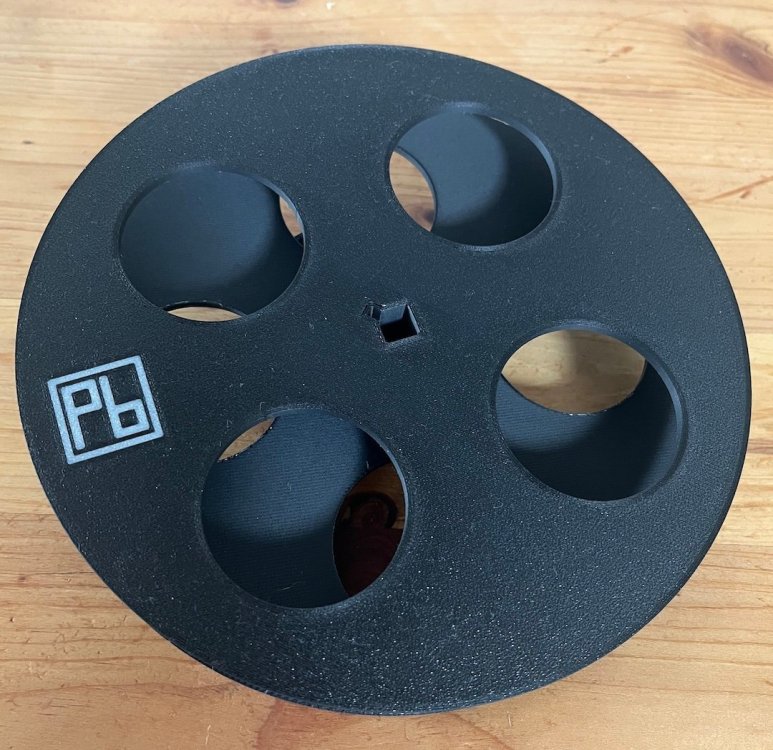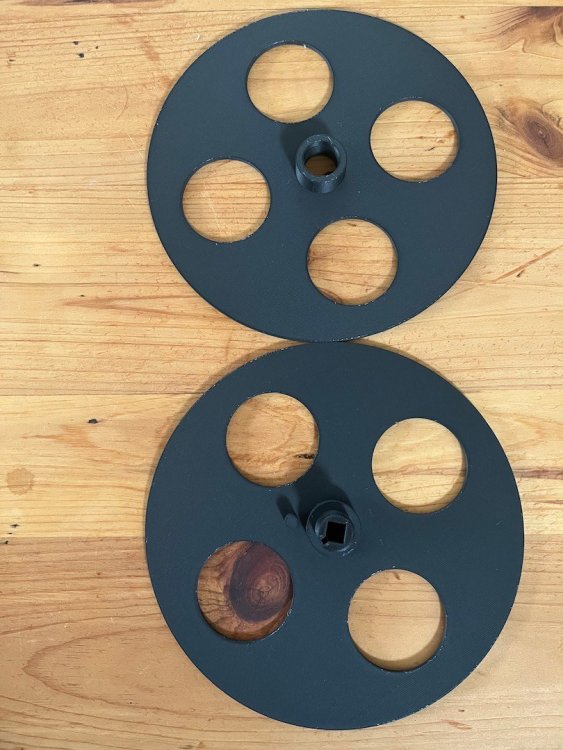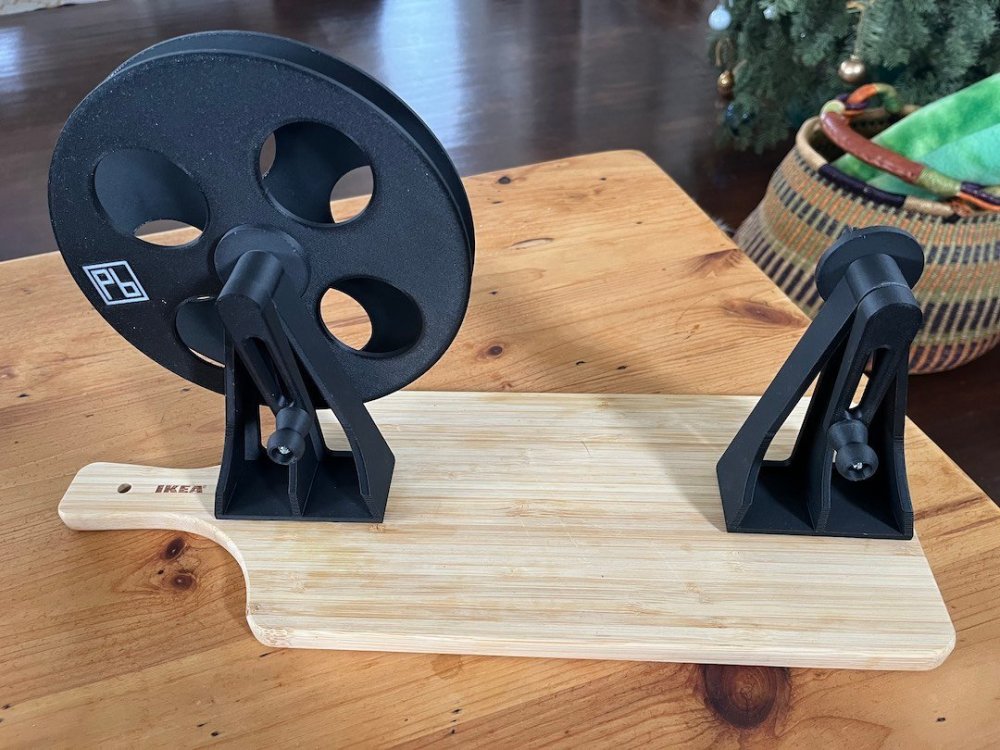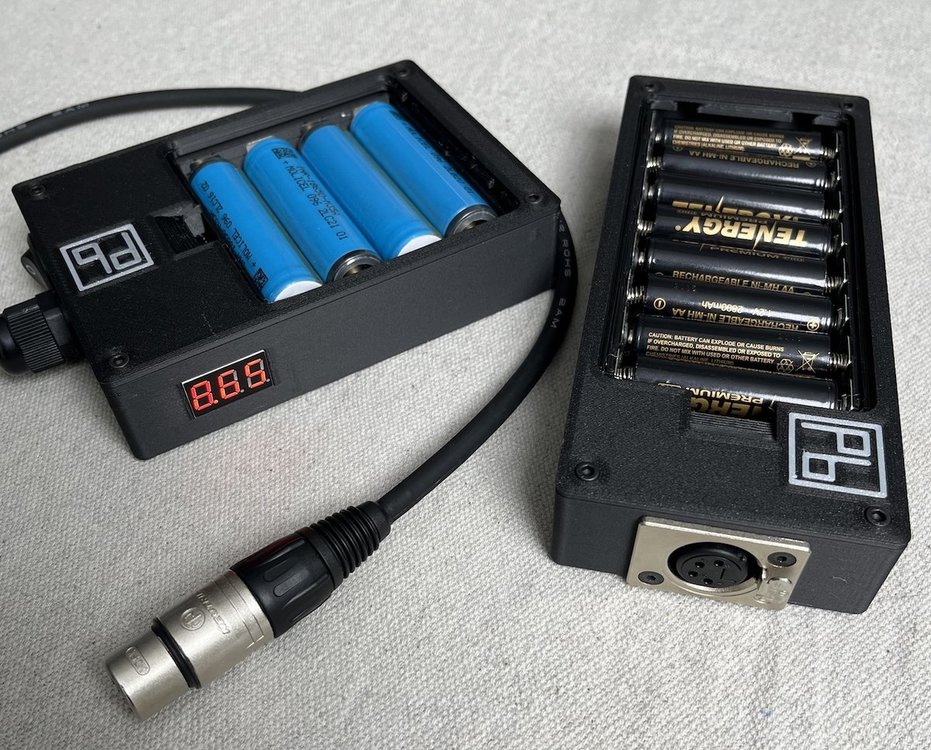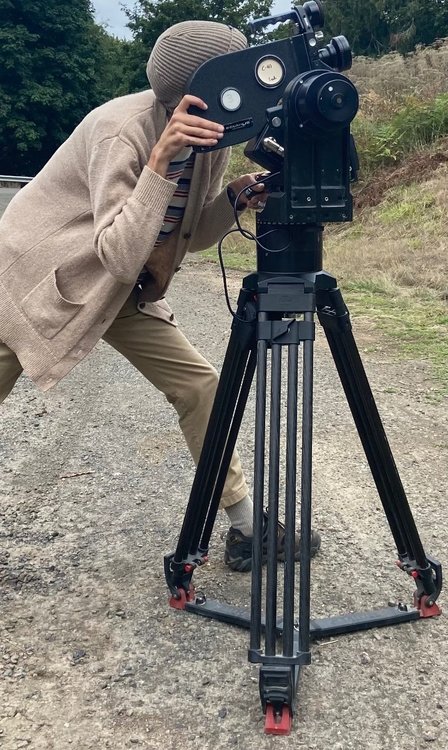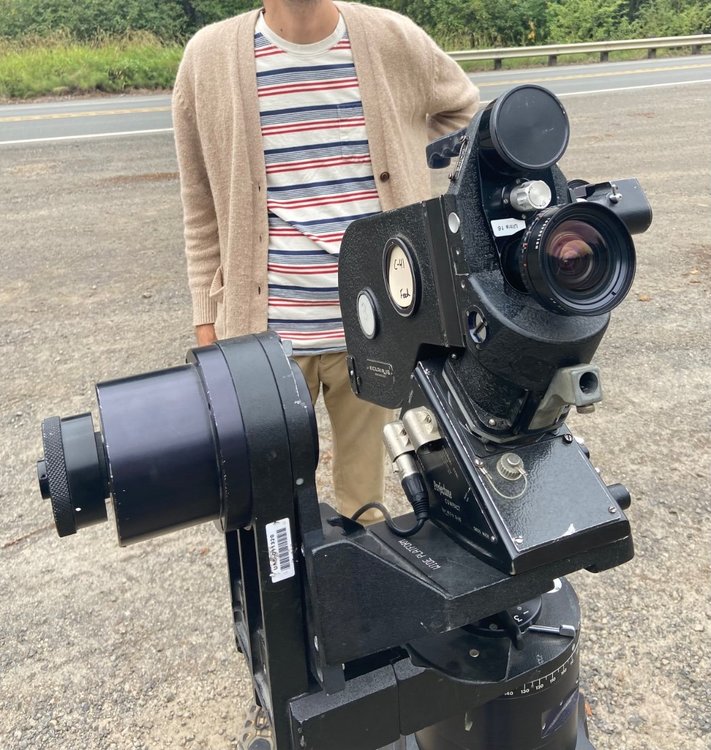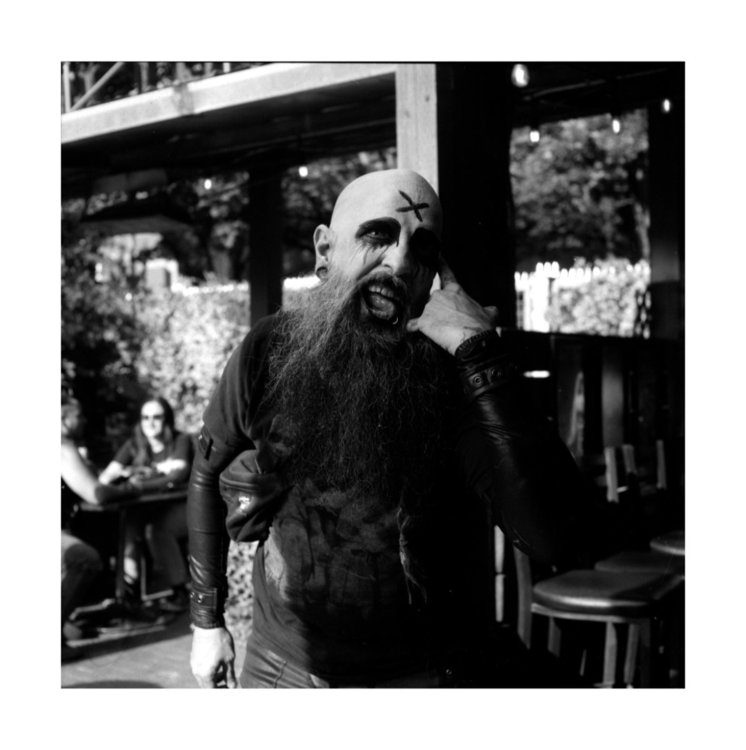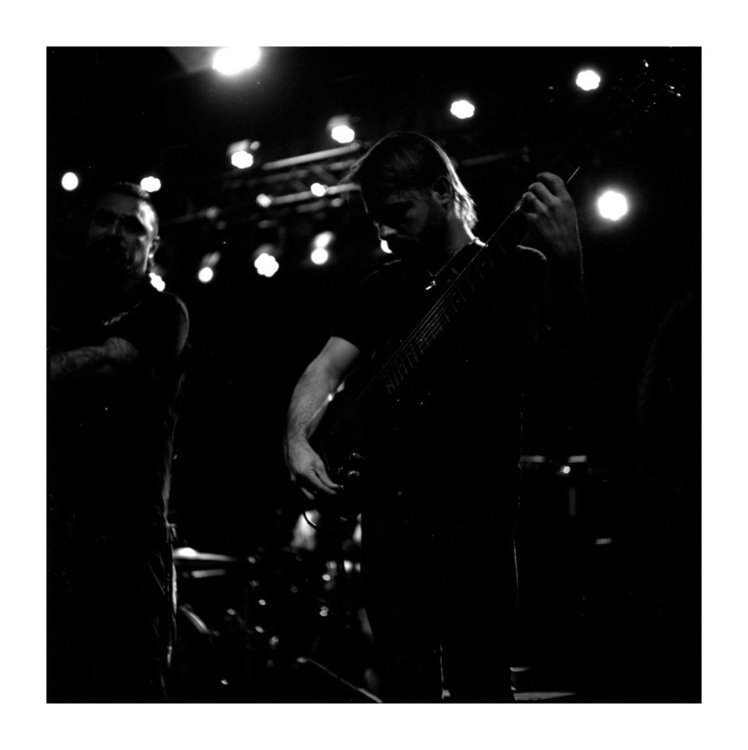-
Posts
60 -
Joined
-
Last visited
Everything posted by Kamran Pakseresht
-
It's great you started a thread about this! I recently have been working on reverse engineering some of these adapters. Here is the official US patent for the mount for those interested: https://ppubs.uspto.gov/dirsearch-public/print/downloadPdf/3682069 I was very motivated to create an adapter for Micro Four Thirds lenses but after actually starting to calculate it and model it - it's just not possible, there is not enough room. I think there is a possibility of a mod - where you remove the 6 screws holding the TS camera mount to the camera body and replace it with a Micro Four Thirds mount - but I will need to get a cheap/parts only ACL to test this on. I did make a 3d printable model of a cap that fits the TS mount as a starting point to all of this work - you can find it here. What type of lens mount adapters do you think are the most useful/would you most like to see?
-
That actually sounds like a fun project - I might give that one a shot
-
In my opinion, for the price you're looking to spend - buy an Eclair NPR (that's running) on Ebay for ~2k - send it to Tyler or Visual Products for a CLA (VP does a CLA for between 3 and 400 dollars) - and spend whatever is left-over on adapters and lenses. Once you have one that's been looked over by a professional (assuming it was running to begin with) - they should run well for many years to come. They are relatively quiet sync-sound cameras that are a great intro to the format if you're just trying to get up and running. At 4k - this is probably where you could realistically start. If it was me and I'd never shot on 16mm before and I could give myself advice - I'd tell myself to just buy a Arri 16s or a Beualieu R16 that was gone over by someone and already running - you can do so much with just a solid camera, you don't necessarily need sync sound to get familiar with the format and explore the medium.
-
I actually took a look at this one and it's in pretty bad shape - it is one of the very very early LTRs (Serial # was B76). It does not run properly (shutter just kind of lurches and then stops) and all of magazines would certainly need to be completely gone over (the rubber belts had completely disintegrated and gotten into basically everything). Definitely not a running camera and possibly a money pit if the electronics are in bad shape.
-
As part of my growing mission to make it simpler and more affordable to shoot on film - I whipped up a 16mm split reel design yesterday that can be easily 3D printed. I have a whole fridge full of Fuji 16mm film that I finally decided to break down into some smaller reels and having a 400ft split reel made it very simple. You can download the files here. You probably will need to flip one of them 180 degrees on the X-axis in your printing software. 0.1 mm layer height is best for the threads. On my Bambu Labs X1C it takes ~2 hours per side. Uses about 111 grams of filament so rather affordable if you're printing yourself. As always my Onshape work is totally public - so you can very easily modify this if you want to make a smaller or larger reel - here is the link. This pairs really nicely with the Short 16mm Film Rewind designs on thingiverse here, which I use for my setup (just double side taped them down to this ikea cutting board which fits nicely into my film changing tent) And for those curious - I just ran 100ft of respooled Fuji 64d that I had been storing in a fridge for the last 12 years through my Beaulieu R16. Developed in a Morse tank and it came out great (rated it at ~25 iso) Here are some close-ups of the reels:
-

Divinity (2023) // Kodak Tri-X // Feature shot on Arri SR3
Kamran Pakseresht replied to Kamran Pakseresht's topic in 16mm
Found the thread here. Really interesting and very cool to see this discussion for such a beautiful film. Here is quote I think you were referencing: The Tri-X results were superior in sharpness, highlight tonality and grain. Contrast was actually normal and comparable between the two. I saw the results both as prints and in a 4k DI suite at Fotokem. It's unclear how much the results were improved by the stock being Tri-X, and how much from the more moderate development. The "normal" developed double X footage showed signs of overdevelopment (especially poor highlight separation) that the 35mm Double-X did not. -

Divinity (2023) // Kodak Tri-X // Feature shot on Arri SR3
Kamran Pakseresht replied to Kamran Pakseresht's topic in 16mm
Curious about that, as far as I knew The Lighthouse was shot entirely on Double-X - here is the a quote from this article about the film choices: “The results confirmed my hunch, that nothing approached the palette we were after quite like B&W negative film,” says Blaschke. “Rob and I saw that the blottier, murkier qualities of DOUBLE-X better-suited our misty, salty, visually-distressed film.” -
Wanted to draw attention to a film I just saw in theaters - Divinity by Eddie Alcazar - shot almost entirely on Kodak 7266 on a super 16 Arri SR3 Incredibly stylized film, mixing all sorts of special and practical effects and even stop motion animation. Definitely worth a watch if you like seeing things originating on 16mm. I didn’t know the film was shot on 16 until after I had watched it, and originally thought it was surely shot on digital with grain added in post - but turns out it was just natural grain from the format. here is the IMDb entry for the technical aspects
-

Les Bosher - Anyone been in touch lately?
Kamran Pakseresht replied to Alexander Boyd's topic in General Discussion
I emailed him just a little over a week ago and he responded the next day. -

Premium membership to post in the marketplace
Kamran Pakseresht replied to Samuel Preston's topic in General Discussion
I guess on the other side of the equation it probably does a really good job at eliminating scammers. -
Does anyone still have this file? All the links seem to fail at this point - would love to host it permanently if someone can help me get hold of it. For those looking for it - was able to find a functioning link here: https://drive.google.com/file/d/1W4WwzNspJ6UckoK67JG5PVsJIsy7poQ_
-
Just wanted to bring attention to a film I watched on Kanopy last night called Enys Men. Kodak made a really short spotlight about it. It was shot entirely on a Bolex H16 - it's really quite a beautiful film if you're drawn to things shot natively on 16mm. Because it wasn't filmed on a sync sound camera, all sounds were added in post - but I thought it was really well done, there are a number of lines spoken by actors that you likely wouldn't realize were dubbed. It is a very slow paced, unnerving film, but worth a watch I think. Here are some IMDB specs for it: Camera Bolex H16 SBM, Kern Macro-Switar and Zeiss Vario-Sonnar Lenses Laboratory Kodak Film Lab, London, UK Negative Format 16 mm(Kodak Vision3 50D 7203, Vision3 250D 7207, Vision3 500T 7219)
-
Very nice footage. After looking around a bit it seems like type of camera used was possibly a Redlake Locam? Looks like they topped out at around 500fps. I could imagine they had to modify them to handle the amount of film they would need to eat through for this footage.
-

Super 8 Magazine #10: 3x Test of the new Kodak Super 8 Camera
Kamran Pakseresht replied to Jurgen Lossau's topic in Super-8
Would love to see the sync sound test footage, if there is any. -

16mm Camera Battery Pack Designs with Replaceable Cells
Kamran Pakseresht replied to Kamran Pakseresht's topic in 16mm
Thank you for the advice, I hadn’t thought about that - I will definitely put these up on Ebay today, that is a really great idea. And yes the voltage regulator is really nice for that and it’s pretty easy to adjust with the readout on the side. I considered making a knob so you would not have to remove the cover to adjust it - but figured that might over-complicate the design a bit. As it is now, you take the top off and use a small screw driver to make the adjustment on a trim-pot that lives on the voltage regulator- but you can see the readout as you adjust so it’s very easy to dial in an exact voltage. -

"Fallen Leaves"
Kamran Pakseresht replied to David Mullen ASC's topic in On Screen / Reviews & Observations
Had a chance to watch this film last night, really beautiful film. The comedic timing and style reminded me quite a bit of Roy Andersson films, which I love. -
I wanted to share some designs I made for 3d printing your own 16mm camera battery packs that use replaceable cells. My motivation was that I kept acquiring these old 16mm cameras with dead battery packs and I wanted to create a pack that would basically never become trash because you can always replace the cells. There are two packs: a pack for the Arri 16s which uses 8x nimh rechargeable double-a batteries (around 9.6v) a universal pack which is a bit more complicated and uses 4x protected 18650 button top lithium ion cells - it uses a voltage regulator so you can tune the voltage to whatever range your camera needs. Because these packs use replaceable cells, they do not charge anything - they are solely for powering your camera - you take the cells out and charge them properly using a balanced charger. The repository for the packs is here. In the repository you can find part lists and some additional information. If you just want to download the 3d files for printing - you can find them here. I've recorded a video tutorial that explains how to build the Arri 16s pack here. The Universal pack is a very similar build process but requires a few more components (on/off switch, voltage regulator and voltage readout) If you don't want do go through the trouble of building one of these but you still want one - you can buy them from pluriboom.com (does not include batteries or charger) and I'll make it for you and send it to your door. I am just learning design with onshape so this has been a fun project - but I am very new to this - if you have any recommendations or changes you think might be nice to add - I'm happy to update the designs. All of my onshape work is totally public so you can also just view the designs here. If you do make any changes I would love to incorporate them back into the repository so others can benefit. If you would like to try making one of these yourself - let me know and I can help with some tips - having others go through the build will probably help me work out some of the kinks in my documentation and make it easier for others in the future.
-

T-Stop Suggestions for 16mm Film?
Kamran Pakseresht replied to Daniel Shevchuk's topic in Camera Assistant / DIT & Gear
It depends on the light available in the scene - get an incident light meter and measure at the time of the shoot. I use the manual Sekonic L-398A meter but there are many options for this that are even more geared towards cinematography. You can also use an app on your phone if you just need something quick that will more or less work without having to spend any money. -

Bringing Foma 200 to 16mm film
Kamran Pakseresht replied to Kamran Pakseresht's topic in Film Stocks & Processing
Hey Sebastian, I have talked with Foma pretty extensively about this. So the base material is triacetate (which is what you want for motion picture film to allow it to break if it jams) - the thickness is the same as their existing Foma R 100 reversal 16mm stock. The differences are that there would be no anti-halo layer if they were to finish foma 200 as 16mm and the color of the base is gray-blue (same as their stills negative film). They are working with another client to bring foma 100 to 16mm and if that pans out they will send me some test stock for me to test, but I basically gotta make a leap of faith if I’m gonna try and get foma 200 made on 16mm. I am still considering this, and still talking with foma. -
I wondered about this - doesn’t the 400ft mag on a Arri 16s have its own torque motor? I guess that is what would account for the higher current draw?
-
I shoot pretty regularly on my Eclair NPR and the tripod I have for it is Sachtler sticks - which are actually pretty light on their own - but the head on them is this cantilevered Ronford Baker Fluid 7 MKIV head which must be something like 40 pounds or more - it’s just kind of crazy to lug around. It is an amazing tripod - I love to use it but I’m starting to think it might even be a bit of a liability. I imagine fluid heads have gotten much better since these two behemoths came about - can anyone recommend a good fluid head that could hold a camera this large and not be such a bear to transport?
-

Bringing Foma 200 to 16mm film
Kamran Pakseresht replied to Kamran Pakseresht's topic in Film Stocks & Processing
Yes - I will plan to put aside a portion of the order for sales originating from of Europe so we don't have to add all that extra shipping, still figuring out logistics but I think we can make that work. -
I wanted to gauge interest in bringing a new film stock to the 16mm format. For context, a few years ago when traveling through Europe I fell in love with Foma 200 35mm and 120 film - this specific film is a bit special. It has t-grain and hexagonal grain structure, giving it great resolving power but also good sharpness and a pleasant grain structure. Many people don't realize that Foma 200 is this sleeper stock that's incredibly flexible. I think it could be a great alternative to Kodak Double-X. So I got to thinking and eventually talking directly with Foma - and it seems they are willing to actually cut Foma 200 into 16mm format for me - given that I purchase a certain amount of it. So I am here to gauge interest. I would be purchasing 250 100ft rolls (on daylight reels) and 75 ~400ft rolls on simple cores. I have started a company and will open an online store to sell 100ft rolls at $50 and 400ft rolls at ~$175 - but only if it seems like I can garner enough interest. My main goal is to basically bring more stocks to the format - if this were to work out well, Foma actually just released a brand new Ortho 400 stock earlier this year that I would love to discuss bringing to 16mm as well. Please let me know if you'd be at all interested in trying out this new stock. I've attached a couple stills examples of Foma 200 - obviously these are larger format than 16mm film so the grain size would be larger on the actual 16mm cut of this film, but keep in mind that the resolving power of Foma 200 is actually higher than that of Kodak Double-X.



